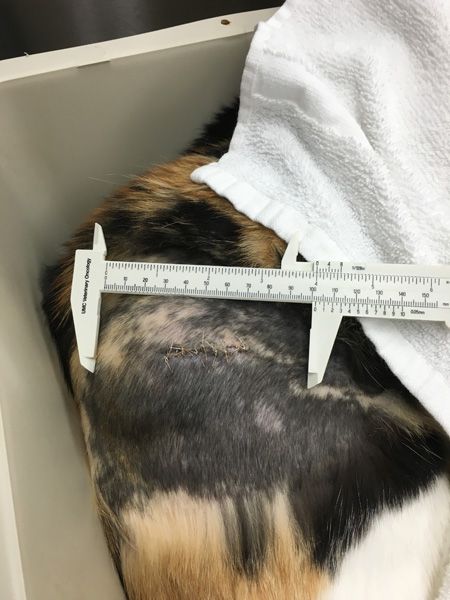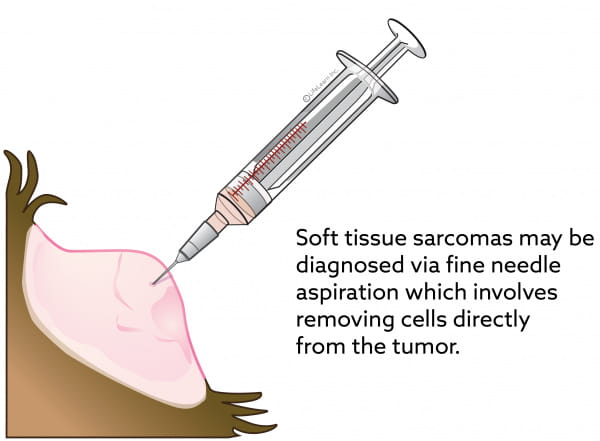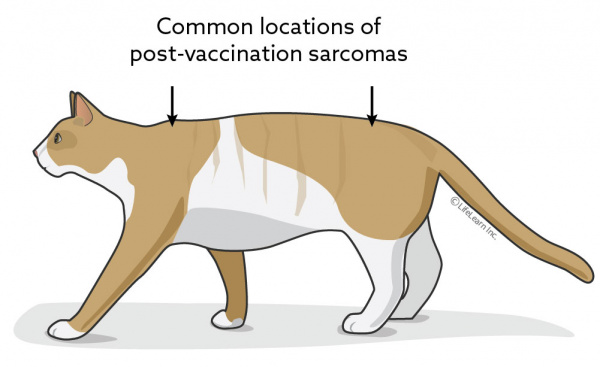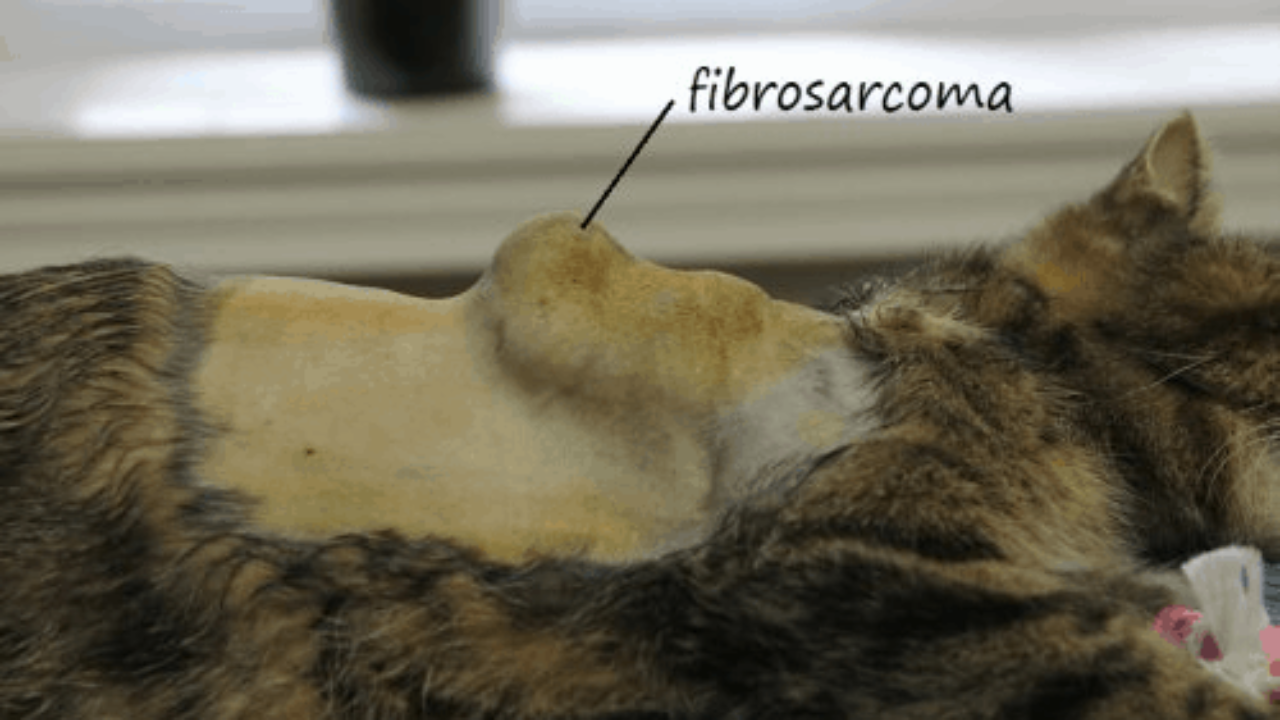sarcoma in cats prognosis
Your cat may be more lethargic have loss of appetite and be reluctant to walk or play due to pain caused by the tumor on the bone. A tumor that develops at the site of a vaccine injection such as for rabies or.

Fibrosarcoma In Cats Causes Symptoms And Treatment
A veterinary pathologist can give the vet and cat owner a prognosis which gives the cat owner a probability of recurrence of the cancer or a metastasis of the cancer to other parts of the cats body.
. A mass that you can feel. 8 rows The prognosis for cats with injection-site sarcomas depends on several variables. This is a cancerous growth presenting as a mass on the body or leg of a cat.
Gender appears to play some role with male cats being seen for gingival tumors more often that female cats. Whats the prognosis for injection-site sarcomas in cats. Yearly check-up examinations of your cat will enable your veterinarian to discover early lesions before they grow large and become difficult to remove.
The most common location where osteosarcomas develop in cats is the hindlimb femur and tibia. Histiocytic diseases in cats and dogs derive from either dendritic or macrophage lineage. The majority of canine histiocytic sarcomas HSs arise from interstitial DCs.
Reported median survival times were 640 days versus 645 days versus 290 days respectively. The symptoms of osteosarcoma in cats can be subtle and they may include. This is often the first sign of a tumor in the skull jaw or ribs.
With a low grade tumor the situation is less serious because the aggressiveness is not as strong as a tumor that is categorized as high grade. Difficulty eating if a tumor affects the jaw. Symptoms of Feline Soft-Tissue Sarcomas.
Symptoms of Sarcoma in Dogs. Feline ocular post-traumatic sarcomas FOPTS represent a very aggressive type of ocular cancer that occurs in cats with a prior history of trauma or severe intraocular disease. Cats that are afflicted with gingival fibrosarcomas are on average seven and a half years old but these tumors have been seen in cats from the age of six months to fifteen years.
Soft tissue cancer can often metastasize spread to other body parts such as the lymph nodes or blood. Sarcomas affecting various body tissues have always been seen in cats but since the early 1990s the occurrence of sarcomas at sites commonly used for vaccination such as the shoulder lumbar region lower back flank side of body and upper hind leg led researchers to see if there was a direct association with vaccination. Insulin Administration in Cats.
Lameness that doesnt go away and swelling of the affected bone. However the predominant symptoms are. The following are just four types of sarcomas in cats.
Cutaneous mast cell tumors present as lumps swellings or lesions in the skin or under the skin usually around the head and neck but sometimes elsewhere. At home pet owners need to keep the cat from scratching biting licking or rubbing the. The symptoms of a soft-tissue sarcoma depend on its location on a cat.
These are the most common symptoms when a tumor affects a limb. The origin of the various. In other words the lower the grade of sarcoma the better.
Affected cats may become dull inappetant and slow to move around. Most soft tissue sarcomas are heterogenous and are solitary tumors that have no breed or sex predilection. If your cat has an osteosarcoma of the limb appendicular osteosarcoma lameness or a distinct swelling may be noted.
Lachowicz explains that soft-tissue sarcomas may be less aggressive with progression occurring over weeks to. Treatment combining surgery chemotherapy and radiation therapy significantly increases the tumor free time to 18-24 months. Swelling or a mass.
They can be wide plaques or lumps. As with most cancers early detection and thus early treatment is most closely related to a good outcome. Spindle cell sarcomas are also known as soft tissue sarcomas STS and in general this term acts as an umbrella for a variety of tumors including fibrosarcoma-connective tissue chondrosarcoma-cartilage liposarcoma-fat tissue hemangiosarcoma-blood vessel cells nerve sheath tumor hemangiopericytoma.
Cats with fibrosarcoma or nerve sheath tumor had significantly longer survival times when compared with cats with malignant fibrous histiocytomas. Mast Cell Tumors In Cats Symptoms Causes Treatments Cattime Mast Cell Cat Symptoms Cats Pin On Cat. Prognostic factors and proposed grading system for cutaneous and subcutaneous soft tissue sarcomas in cats based on a retrospective study J Feline Med Surg.
If the cat dies from fibrosarcoma it is likely because of the recurrence of primary site tumors. Treatment options are limited and early recognition is imperative for close monitoring of disease progression and prompt. A sarcoma is diagnosed by a biopsy of the tissue.
The prognosis is variable. Upon a confirmed diagnosis additional tests are performed to determine the cats overall health and also to determine if the tumor cells have metastasized spread to other parts of. Soft Tissue Sarcoma in Dogs and Cats.
1 Dendritic cells DCs include interstitial DCs and intraepithelial DCs Langerhans cells. These tumors are further categorized into growth types namely malignant fibrous histiocytomas peripheral nerve sheath tumors hemangiopericytomas fibrosarcomas and synovial cell sarcomas. Weight loss is a common sign.
The rate of surviving depends on the grade of the feline tumor. They often occur in middle-to older-aged animals which is consistent with the signalment of this case. Cats with tumors on the legs where an amputation can be performed appear to do better than cats with tumor on the trunk of the body.
2 Macrophages represent the lineage involved with the hemophagocytic syndrome. In terms of appearance soft tissue sarcomas often present as. The spindle cell sarcomas may be felt as lumps under the dogs skin.
The clinical signs of feline mast cell tumors depend on the location of the tumor. Often the lameness is severe with the cat refusing to place the affected limb on the ground. Ocular tumors in cats are seen uncommonly in general practice.
Typically they are shiny pink hairless nodules on the skin but there are many variations on this. Diagnosis Of Bone Cancer In Cats. Soft tissue sarcomas account for approximately 7 of skin and subcutaneous tumors in cats.
If the bone cancer is in the mouth the cat may not wish to eat at all. Injection-site sarcomas in cats are very difficult to treat. What is the prognosis.
The spindle cell sarcomas may not grow for extended periods of time but this doesnt mean the tumor is not cancerous.

Feline Injection Site Sarcomas Risk Factors Diagnosis Staging And Treatment Algorithm Today S Veterinary Practice

Cat Injection Site Sarcoma The Risks Treatment Prognosis Of This Deadly Tumor Our Pet S Health

Learn About Soft Tissue Sarcomas In Cats Petcure Oncology

Feline Injection Site Sarcoma Today S Veterinary Practice

Feline Injection Site Sarcomas The Veterinary Nurse

Injection Site Sarcomas In Cats Good Pet Parent

Feline Injection Site Sarcomas Update

Soft Tissue Sarcomas Vca Animal Hospitals

Tumors Of The Skin In Cats Cat Owners Merck Veterinary Manual
Fibrosarcoma In Cats Symptoms Diagnosis Treatment Innovet Pet

The Continuing Conundrum Of Feline Injection Site Sarcomas American Veterinary Medical Association

Post Vaccination Sarcoma In Cats Vca Animal Hospitals

What You Should Know About Stomach Intestinal Cancer In Cats Matthews Emergency Specialist Vets

Fibrosarcoma Soft Tissue Sarcoma International Cat Care

/GettyImages-11673268481-ff230807a7e04e2db8e38e148edb19a5.jpg)